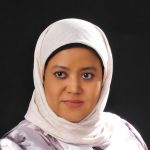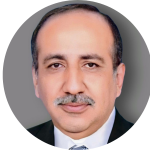
Helen Karatza
Professor Emeritus
Department of Informatics
Aristotle University of Thessaloniki, Greece
karatza@csd.auth.gr
Optimal Scheduling of Real-Time Applications in Cloud, Fog and Mist Computing Environments Current Status and Research Challenges
Abstract:
In recent years, the proliferation of Internet of Things (IoT) technologies and applications has led to an exponential increase in data volumes generated by IoT devices, rendering traditional cloud computing inadequate for efficient data transfer. Consequently, Fog and Mist computing paradigms have emerged as viable solutions aimed at addressing challenges pertaining to network bandwidth, transmission latency, and security. Given the time-sensitive nature of most IoT applications, ensuring timely data processing is paramount. Thus, in such computing environments, the adoption of efficient scheduling schemes is critical to guaranteeing real-time workload execution and maximizing the utilization of cloud, fog, and mist computing systems. The aim of this keynote presentation is to introduce innovative methodologies for addressing the complexities inherent in resource allocation and scheduling of real-time applications within cloud, fog, and mist computing environments. Furthermore, insights into forthcoming trends and avenues within this domain will be offered to guide future research endeavors.
Biodata:
Helen D. Karatza (senior member of IEEE, ACM, SCS) is a Professor Emeritus in the Department of Informatics at the Aristotle University of Thessaloniki, Greece. Dr. Karatza’s research interests include cloud, fog and mist computing, energy efficiency, fault tolerance, resource allocation, scheduling algorithms and real-time distributed systems. Dr. Karatza has authored or co-authored over 250 technical papers and book chapters including seven papers that earned best paper awards at international conferences. She served as an elected member of the Board of Directors at Large of the Society for Modeling and Simulation International. She served as chair and keynote speaker in international conferences. Dr. Karatza is Senior Associate Editor of the Elsevier journal “Simulation Modelling Practice and Theory”, an Editor of “Future Generation Computer Systems” of Elsevier, an Associate Editor of IEEE Transactions on Services Computing and an Editorial Board member of Cluster Computing of Springer. She was Editor-in-Chief of the Elsevier journal “Simulation Modelling Practice and Theory”, Editor-in-Chief of “Simulation Transactions of The Society for Modeling and Simulation International”, Associate Editor of “ACM Transactions on Modeling and Computer Simulation” and Senior Associate Editor of the “Journal of Systems and Software” of Elsevier. She served as Guest Editor of Special Issues in several international journals. More info about her activities and publications can be found at: http://netcom.csd.auth.gr/~karatza/

Dr Hanan Albuflasa
Acting General Director of Energy Efficiency, Ministry of Electricity and Water Affairs
Dr Hanan currently working as acting General Director of Energy Efficiency at Ministry of Electricity and Water Affairs, she was the head of the Department of Physics at the University of Bahrain. Albuflasa has a Ph.D. and an MSc in Renewable Energy from the Centre of Renewable Energy System Technologies, CREST, Loughborough University, UK. Albuflasa is Bahrain’s representative for the GCC Technical Standard Committee on Renewable Energy and Energy Storage Systems, a participating member and country representative of the International Electrotechnical Commission (IEC) for TC 82 and TC 88. She is a senior IEEE member, IEEE SIGHT chair and REGION 8 Power and Energy Society Representative.
She is the principal investigator of several research grants and collaborations between the University of Bahrain and other international institutions, including the Horizon2020 project.

Prof. Dr. Fateh Marri
Vice Chancellor Sindh Agriculture University, Tandojam
Prof. Dr. Fateh Muhammad Marri is Vice Chancellor of Sindh Agriculture University (SAU), Tandojam who is known to be an academician, finest development economist, agricultural policy expert, educationist and management professional of Pakistan having served as the ‘Acting Executive Director’ and ‘Member Operations and Planning’ at the Higher Education Commission Pakistan besides the services rendered as the ‘Chief Economist of Sindh’ and Project Coordinator for donor funded projects in the fields of agriculture & irrigation. His over 2.5 decades highly versatile experience involves teaching, research, training, management, planning, fund raising, policy making, regulations and quality assurances in academia, agriculture, public, private and social sectors. His professional career is an exceptional example of excellence, commitment, quality, transparency and integrity, thereby, executing the complex organizations for national prosperity and societal transformation. He has successfully revived, executed and completed in time the dormant project of ‘Sindh Water Sector Improvement Project’ (worth US$ 332 million), without any cost escalation and having best quality of works. The project revived three major irrigation canal systems creating impact of billions of rupees on the agrarian economy. Farmers at the tail end started receiving their due share of water. This quality endeavor then received three prestigious awards, including the ‘British Construction Award’ and ultimately recognized as one of the most transparent projects by the ‘Transparency International Pakistan’. Moreover, he is the author of most prestigious documents, viz. ‘Sindh Agriculture Policy (2018-30)’ and ‘Sindh Irrigation Management Strategy (2015-2025)’. As Chief Economist, he initiated the project for measuring provincial GDP, and organized ‘Sindh Development Forum’, besides, he initiated a project for launching the book, ‘Economy of Modern Sindh’ authorized by Dr. Ishrat Hussain. As ‘Member Operations and Planning’ and ‘Acting Executive Director’ in HEC during 2019-21, Dr. Marri focused on addressing the development needs of underprivileged HEIs of Pakistan, including AJK, Balochistan, Gilgit Baltistan, and Sindh, by allocating resources through a transparent process which enhanced the access and quality of education in those areas. He further developed a comprehensive system of supporting and monitoring of HEIs which improved the pace of development projects and increased the utilization of development budgets. Consequently, the development expenditure in the universities was enhanced from 50-90% of allocation, during these financial years. As a Vice Chancellor, SAU he started multiple new teaching programs and transformed SAU to a student-oriented and research-centric institute, besides augmenting the research culture to elevate the number and quality of research projects. He has prioritized crop seed and animal breed improvement programs, value chain improvement, agricultural financing, water management, and agricultural financing for research in the university. Dr. Marri is the sincere son of soil who believes in serving his nation with all his zeal and zest.
